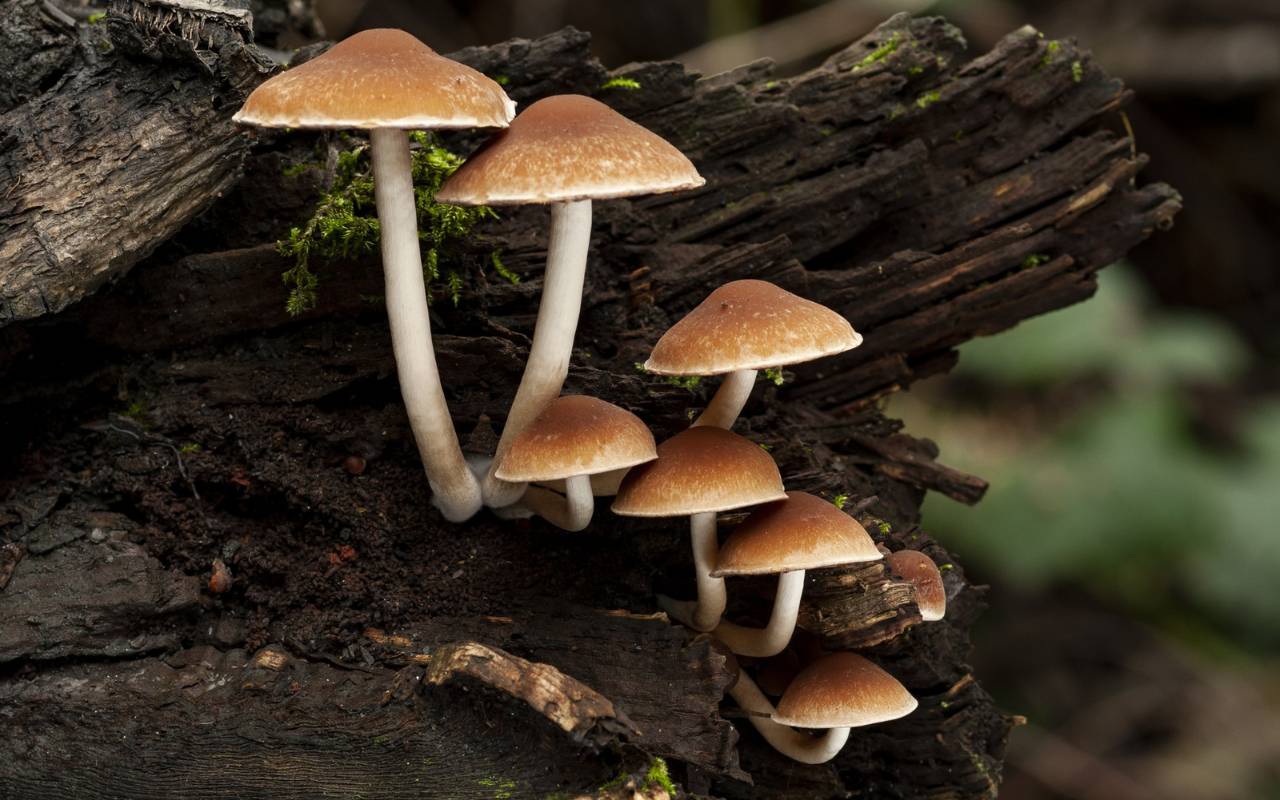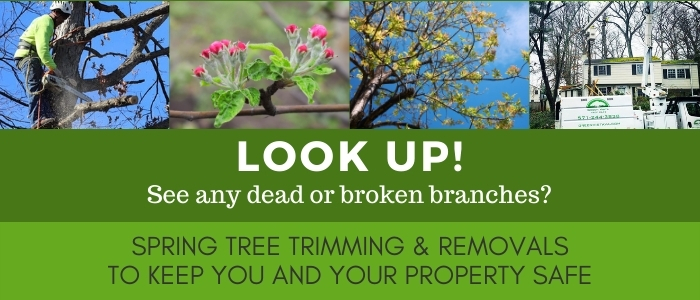
Mushrooms That Grow on Trees – What Does It Mean?
Mushrooms that grow on trees may seem like an enchanting sight in Northern Virginia, but it often raises questions about their origin. In this article, we explore the fascinating relationship between fungi and trees, uncovering the reasons mushrooms grow on trees.
By understanding the role of fungi in tree decomposition and the environmental factors that encourage mushroom growth, we can shed light on why your tree might be hosting this natural phenomenon by examining the following:
- The Role of Fungi in Tree Decomposition
- Environmental Factors that Promote Mushroom Growth
- How Moisture and Humidity Impact Mushroom Growth
- How Trees Provide Nutrients for Fungi
- Common Types of Tree-Fungi Relationships
- Parasitic Fungi and Their Impact on Tree Health
- Mutualistic Fungi and Their Benefits to Trees
Join us as we delve into the world of tree-fungi relationships and uncover the mysteries of mushroom growth.
Key Takeaways
- Fungi play a crucial role in the decomposition of dead trees, releasing nutrients into the soil.
- High humidity and moisture levels promote mushroom growth by creating ideal conditions for spore germination and mycelium production.
- Parasitic fungi can negatively impact tree health by invading tree tissues and compromising nutrient and water transport.
- Mutualistic fungi form a symbiotic relationship with trees, enhancing nutrient absorption, promoting tree resilience, and protecting trees from harmful pathogens.

Mushrooms are the fruiting bodies of fungi that decay dead organic material.
The Role of Fungi in Tree Decomposition
The fungi play a crucial role in decomposing the tree. When a tree dies, it becomes a valuable source of nutrients for various microorganisms, including fungi. As the fungi break down the organic matter present in the dead tree, they release essential nutrients back into the soil, allowing other plants and organisms to thrive. Fungi are the primary decomposers in the forest ecosystem, and they play a vital role in nutrient cycling.
When a tree starts to decompose, fungi spores are present in the surrounding environment. These spores can land on the decaying wood and begin to grow, forming mycelium. The mycelium acts as a network of microscopic threads that spread throughout the dead tree, secreting enzymes to break down complex organic compounds into simpler forms that fungi can absorb and utilize for energy.
As the mycelium grows, it eventually forms fruiting bodies, more commonly known as mushrooms. These mushrooms are the visible part of the fungi, and their purpose is to release spores into the air. The spores then disperse and can land on other dead or decaying organic matter, continuing the cycle of decomposition.
The presence of mushrooms on a tree indicates that the fungi have successfully colonized and are actively breaking down the wood. While oftentimes mushrooms can be the sign of a detrimental tree condition, it’s important to note that not all mushrooms growing on trees are harmful. Some fungi have a beneficial symbiotic relationship with trees, forming mycorrhizal associations in the root zone that help the tree absorb nutrients and water from the soil.
Mushrooms That Grow on Trees – It’s About the Environment
Moisture and humidity levels play a crucial role in promoting mushroom growth. The presence of sufficient moisture allows the fungi to absorb water and nutrients from the surrounding environment, aiding in their growth and development.
Moisture and Humidity Levels
High humidity levels can lead to mushrooms growing out of your tree. Mushrooms are fungi that thrive in moist environments, and they require a certain level of humidity to grow and reproduce.
When the air is humid, it provides the perfect conditions for mushroom spores to germinate and develop into visible fruiting bodies. The moisture in the air allows the spores to absorb water and initiate the growth process.
Additionally, high humidity helps create a suitable habitat for the mycelium, which is the underground network of fungal threads that supports the mushroom’s growth. The mycelium absorbs moisture from the surrounding environment, and when the conditions are right, it produces mushrooms.
So, if you notice mushrooms growing out of your tree, it may be a sign that the humidity levels in your area are high.
Availability of Nutrients in the Tree
If you notice mushrooms popping up on your tree, it’s likely because there are ample nutrients available for their growth. Trees provide an abundant source of organic matter, such as dead wood and decaying leaves, which serve as a food source for mushrooms.
As the tree decomposes, it releases nutrients into the surrounding soil. These nutrients, including nitrogen, phosphorus, and potassium, are essential for the growth and development of mushrooms. Additionally, the presence of mycorrhizal fungi, which form a symbiotic relationship with the tree’s roots, further enhances the availability of nutrients for mushroom growth.

Mushrooms growing from the soil around your tree could be a sign that your tree is suffering from root rot.
Common Types of Tree-Fungi Relationships
Parasitic fungi can have a significant impact on tree health. They cause diseases and ultimately lead to the decline and death of the tree. These fungi invade the tree’s tissues, disrupting its normal functions and weakening its structure.
On the other hand, mutualistic fungi form a symbiotic relationship with trees. They provide them with essential nutrients and aid in their growth and resilience.
Parasitic Fungi and Their Impact on Tree Health
You’ll want to be aware of the impact of parasitic fungi on the health of your tree.
Parasitic fungi are organisms that rely on living trees for their survival and growth. They infect the tree through roots, wounds, or weak spots in the bark and then penetrate deeper into the tree’s tissues, causing damage along the way.
Once inside, the fungi feed on the tree’s nutrients, ultimately weakening its structure and compromising its ability to thrive. This weakened state can make the tree more susceptible to other diseases and pests, further exacerbating its decline.
In addition, parasitic fungi can interfere with the tree’s ability to transport water and nutrients, leading to stunted growth and eventual death. It’s important to identify and address these fungal infections promptly to protect the overall health of your tree.
A common condition that leads to fungal growth on trees is called “root rot,” most often the result of the Armillaria tabescens species. This condition develops when the soil around your tree roots becomes oversaturated, depriving the roots of oxygen and preventing them from absorbing nutrients. The wet conditions and dying root tissue invite fungal growth and the associated fruiting bodies that grow around and out of your tree.
Mutualistic Fungi and Their Benefits to Trees
Mutualistic fungi, also known as mycorrhizal fungi, form a symbiotic relationship with trees by decomposing matter in the soil, which releases important nutrients the roots can absorb.
Mycorrhizal fungi provide benefits such as increased nutrient absorption and improved resistance to environmental stresses. These fungi play a crucial role in the ecosystem by forming a network of filaments called hyphae. These hyphae extend into the soil and attach to the roots of trees.
Here are five fascinating facts about mutualistic fungi:
- They help trees absorb nutrients more efficiently, especially phosphorus and nitrogen.
- They enhance the tree’s ability to tolerate drought and other environmental stresses.
- They protect trees from harmful pathogens by producing antibiotics.
- They promote the growth of beneficial bacteria in the soil, which further enhances tree health.
- They contribute to the overall biodiversity of the forest by forming intricate underground networks.
Overall, mutualistic fungi are essential for the well-being and survival of trees. They are a critical component of forest ecosystems.
Frequently Asked Questions
How do mushrooms obtain nutrients from trees?
Mushrooms obtain nutrients from trees by forming a symbiotic relationship known as mycorrhiza. The mycelium, a network of fungal threads, attaches to the tree’s roots and absorbs sugars and carbohydrates.
In return, the mushroom provides the tree with essential nutrients like phosphorus and nitrogen. This mutualistic partnership benefits both organisms, allowing the mushroom to grow and the tree to receive vital nutrients for its growth and survival.
Can mushrooms harm or kill a tree?
Mushrooms can indeed harm or even kill a tree. Certain species of mushrooms, known as parasitic fungi, can penetrate the tree’s bark and consume its nutrients, causing damage to the tree’s root system and eventually leading to its demise.
Additionally, the presence of mushrooms can indicate that the tree is already weakened or decaying, making it more susceptible to diseases and pests.
Therefore, it is important to address the mushroom growth and assess the health of the tree to prevent any further damage.
Are all mushrooms that grow on trees edible?
Not all mushrooms that grow on trees are edible. While some mushrooms that grow on trees are safe for consumption, there are also many species that are toxic and can cause illness or even death if ingested.
It is crucial to have proper identification of the mushroom species before consuming them. Consulting with a knowledgeable mycologist or expert is recommended to ensure safety when foraging for edible mushrooms.
How long does it take for mushrooms to grow on a tree?
Mushrooms can take anywhere from a few days to several weeks to grow on a tree. The exact time frame depends on various factors like the type of mushroom, environmental conditions, and the health of the tree.
Moisture, temperature, and availability of nutrients play crucial roles in the growth process. It’s important to note that not all mushrooms that grow on trees are edible, so caution should be exercised when foraging.
Can the presence of mushrooms indicate a diseased tree?
The presence of mushrooms on a tree can indeed indicate a diseased tree. Mushrooms are the fruiting bodies of certain fungi that thrive on decaying organic matter, including trees. When a tree is diseased or decaying, it provides the perfect environment for fungi to grow.
For example, oversaturated soil will starve a tree’s roots of nutrients and invite fungal growth, which can result in a condition called root rot. In this case, the mushrooms themselves are not the problem but rather a sign of the underlying issue. It is important to address the diseased tree to prevent further damage and potential hazards.
Need Help Having Your Trees Assessed for Mushrooms or Something Else?
Call Green Vista today at 571-244-3838 for a tree care consultation. We’re your Northern Virginia tree experts serving Arlington, Alexandria, and Fairfax County, VA. We can’t wait to hear from you!
In need of tree care services?
Give us a call at 571-244-3838 or request a quote online!
More Articles From Green Vista Tree Care







